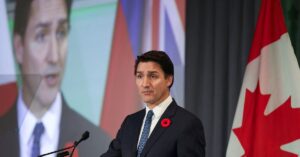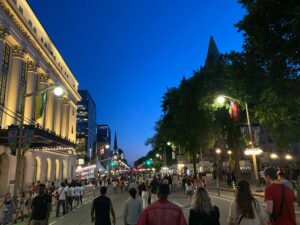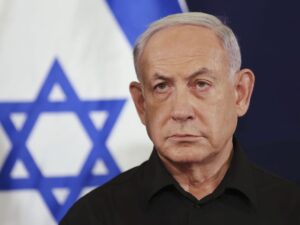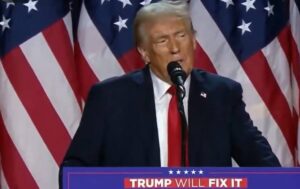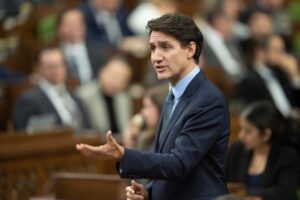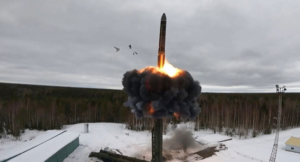
The Royal Canadian Air Force announced earlier this month that it will retire its fleet of pilot training jets and put the program on hiatus.
Canada’s aspiring pilots will now travel to Texas, Finland and Italy to earn their wings.
So ends a proud tradition of pilot training that during the Second World War saw Canada train more than 130,000 Allied aircrew, earning it the epithet “the aerodrome of democracy” from then U.S. President Franklin Roosevelt.
The RCAF said the decision is related to the transition from the current CF-18 fleet to the incoming F-35A fighters. It has certainly been known for at least a decade that the CT-155 Hawk training fleet would be “timed out.”
But it is a sign of the times that a military that is being asked to make budget cuts of nearly $1 billion this year has contracted out the solution to its allies, instead of updating its own program.
Politicians prefer to ignore complicated and expensive problems as long as the public lets them. But it’s an indication of how embarrassing Canada’s military spending (or lack of) has become that public opinion is on the move.
The twin threats of Russia, which has doubled its defence budget, and Donald Trump, who has said he might abandon NATO, have resulted in a material increase in the number of people who want Canada to hit the defence spending target of two per cent of GDP to which it has committed.
A majority (53 per cent) told the Angus Reid Institute in a poll this month that they want Canada to meet its commitment or exceed it. That number rose to 65 per cent once respondents were told about Trump’s comments that he would let Russia “do whatever the hell they want” with “delinquent” NATO members.
Both the Liberal and Conservative parties have said they will work towards the two-per-cent target, without providing a timeline.
In the meantime, the Trudeau government is making absolute cuts to the Canadian Forces budget.
Former clerk of the Privy Council, Michael Wernick, wrote recently that the debate we should be having is whether the next government will borrow more money, raise revenues or cut spending elsewhere to fund the extra $18 billion or so that would be needed to meet NATO commitments.
“Are Canadians ready for several years of collective effort and a bit of sacrifice to actually pay for bolstering defence and security?” he asked.
Assuming they are (if only to maintain access to the U.S. market) where would the money come from?
Even though the federal government will raise $478 billion in revenues next year, nearly $300 billion of that is either committed to transfers to individuals and provinces for health and other benefits, or for debt repayments.
Discretionary spending comes to around $200 billion but, in reality, not much of it is discretionary. For example, public service salaries come to around $60 billion.
Economist Trevor Tombe wrote recently in The Hub that the largest contributor to rising federal spending is seniors’ benefits. He said that the government could save up to $13 billion a year by 2028, if it restricted benefits to seniors with family income above $150,000.
The problem with that argument is that seniors vote. And right now, 40 per cent of them are supporting the Conservatives.
When it comes to direct spending, there are 129 organizations and departments that are funded by parliamentary appropriations in the Main Estimates, but there are few that could yield the kind of savings a government intent on bolstering defence (and balancing the budget) would require.
Except, as Ian Brodie — former chief of staff to prime minister Stephen Harper — pointed out in a National Post video last week, the massive run up in spending on Indigenous Services Canada means a department that used to account for the equivalent of less than half of the defence budget will this year receive two per cent of GDP.
In the 2014/15 Main Estimates, the then Department of Indian Affairs and Northern Development was allocated $8 billion.
In the same year, National Defence received $18.6 billion.
Nine years later in this year’s Main Estimates, appropriations worth $48.6 billion were approved for Indian Affairs’ two successor departments, Indigenous Services and Crown-Indigenous Relations.
Defence got $24.8 billion.
That is a conspicuous imbalance.
There are caveats to those raw numbers. This year’s Indigenous Services allocation is inflated by at least part of a $23-billion child welfare court settlement. But even next year, the Indigenous Services budget will be twice what it was in 2014/15.
Expenditure on Indigenous Services has increased at twice the speed of the rest of government, which has itself galloped along at an impressive rate.
Indigenous activists can claim, with justification, that the massive spending is simply to make up for chronic underfunding on water, education and housing for decades.
But that may not be an argument that resonates with the public, if the national interest is threatened.

